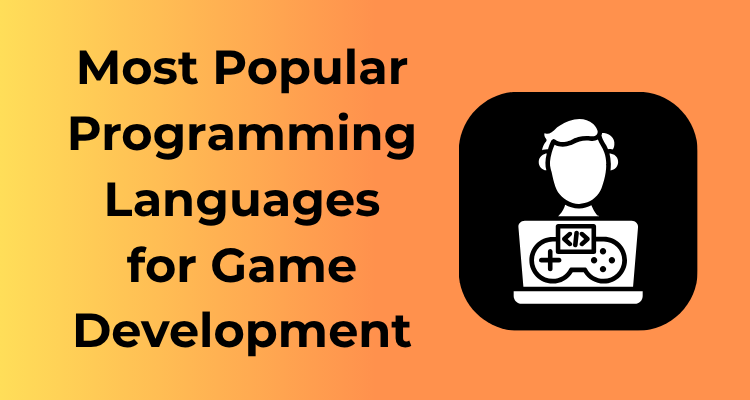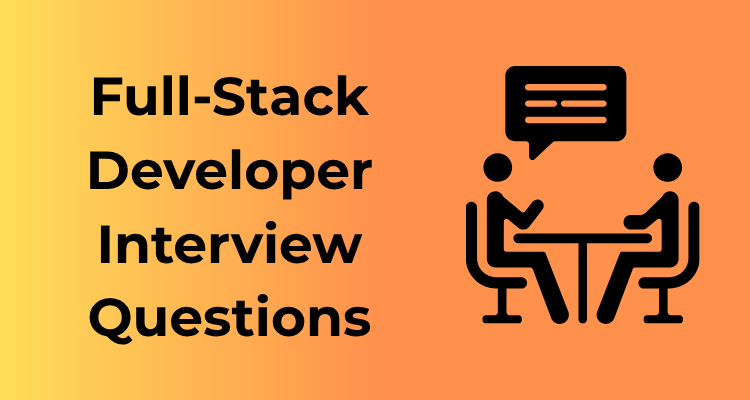So you’re considering diving into the world of tech? That’s awesome! But before you jump in, let’s take a step back and evaluate where your interests lie and what you want to achieve. Don’t worry, this part isn’t about having everything figured out — it’s about discovering what excites you and setting some starting points.
What Excites You About Tech?
First things first, ask yourself: *Why tech?* Is it the idea of creating apps, websites, or software? Maybe you’re curious about cybersecurity, artificial intelligence, or data analysis. Tech is a broad spectrum—it’s like a buffet with endless options! Start by reflecting on what excites you the most. A great way to uncover this is to think about the tech-related products or systems you use daily. Could you see yourself working on those kinds of projects?
Identify Your Strengths
What are you already good at? If you’re a great problem-solver, programming might be your jam. Are you creative? UX/UI design could be calling your name. Maybe you’ve got a knack for numbers—data science or analytics might be a perfect fit. Think about your core strengths, even those outside of tech. Sometimes, tech roles overlap with other industries, so you can use your existing skills while also building new ones.
- Example: A teacher transitioning into tech can explore instructional design or ed-tech development.
- Example: Love organizing and managing tasks? Project management in tech could come naturally to you.
The key here is to take a moment to connect the dots between your current skills and what’s in demand in the tech world. It’s a fun puzzle to solve, I promise!
Define Your Goals
Once you’ve identified what areas of tech interest you, think about what you’d like to *achieve*. Ask yourself:
- Why do I want to get into tech? (For a career change, passion, or higher pay?)
- Do I prefer working for a company, freelancing, or launching my own tech start-up in the future?
- Am I aiming for a specific type of work-life balance that aligns with tech jobs?
Your goals can be as big or as simple as you want. You don’t need a full five-year plan right now, but having an idea of *why* you’re stepping into tech will help guide your learning journey and keep you motivated.
Test the Waters
If you’re still unsure, that’s okay! Dipping your toes in the water is a fantastic way to get a feel for different tech disciplines. Try free tools, tutorials, or quick intro courses on platforms like YouTube, Khan Academy, or Codecademy. Spend a weekend experimenting with coding, designing a website, or analyzing data—you might be surprised at what clicks with you.
5. Avoid Perfection Paralysis
This stage isn’t about being perfect or locking yourself into one thing for life. Everyone’s journey is full of tweaks and pivots! Don’t get caught up worrying if you’ve chosen the “right” path straight away. What truly matters is starting somewhere that inspires you. You can always refine and adjust as you learn more and grow in confidence.
Picking a Tech Path Without Overthinking
So, you’ve decided to take the plunge into the tech world—congrats! But now comes that pesky question: which tech path should you follow? With so many options out there, it can feel overwhelming, like you’re standing in front of an all-you-can-eat buffet with no idea where to start. The good news? You don’t need to have everything perfectly figured out from Day 1.
Start With What Sparks Your Curiosity
First things first: forget the idea that there’s a “perfect” choice and instead focus on what interests you. Are you fascinated by websites, apps, or how things look online? That might mean web development or UX/UI design is calling your name. Do you enjoy solving puzzles or cracking codes? Consider diving into software engineering or cybersecurity. Love the idea of teaching machines to think? Machine learning or AI could be your jam.
Pro Tip: Don’t confuse curiosity with perfection. You don’t need to love every second of learning to know you’re on the right path—it’s normal to hit bumps along the way.
Explore Broadly Before Narrowing Down
Think of tech as a world full of mini-worlds. You won’t know what excites you until you explore a bit. Here’s a simple plan for dipping your toes in:
- Watch intro videos: Look for beginner-friendly content on YouTube that explains what people in different tech roles do daily. This can help you visualize how the work matches your interests.
- Try free tutorials: Platforms like Codecademy, freeCodeCamp, or Khan Academy offer bite-sized lessons you can try without committing to a full course.
- Join online communities: Find tech communities on Discord, Reddit, or LinkedIn to learn from others who’ve walked the same path.
Don’t Get Stuck in Analysis Paralysis
What stops many people is overthinking their choice. It’s almost like we seek some magical sign from the universe to tell us we’ve picked the right path. Here’s a secret: the tech industry rewards taking action way more than waiting for the “perfect” decision. Even if you choose something and later discover it’s not for you, that’s okay. Every step forward teaches you something valuable.
If you’re completely stuck, start with web development. It’s beginner-friendly, widely applicable, and lets you create tangible projects as you learn. Plus, debugging CSS will definitely teach you patience!
Be Willing to Pivot
At the start, you don’t need to lock yourself into a long-term career decision. Many people shift gears as they grow into their tech journey. For example:
- Start with front-end development, discover you love coding logic, and switch to back-end development.
- Experiment with data analytics before falling in love with data visualization tools like Tableau or Power BI.
- Dabble in game development, only to realize UI accessibility design is your true passion.
Pivoting is not failure—it’s fine-tuning your path to success.
Learn the Importance of Skills and Not Just Degrees

Let’s clear something up right away: while traditional degrees can open doors, they are definitely not the only path to breaking into tech. The industry values what you can do over the specific qualifications on your resume. This is great news because it means you can take control of your learning journey!
Why Tech Loves Skills
Tech is all about solving problems and building things. Employers and clients care about whether you can code a functioning app, debug a tricky system error, or design a user-friendly website—not whether you sat in a classroom for four years to learn how to do it. In fact, many tech companies openly say they prioritize practical skills over formal education.
Think of it like this: Would you rather hire a plumber with a degree in engineering or someone who’s already expertly installed hundreds of sinks? Tech operates on the same principle.
Hard Skills vs. Soft Skills
Technical chops, or “hard skills,” are a no-brainer in the tech world. These might include:
- Programming languages (like Python, JavaScript, or Ruby)
- Web development and design tools
- Cloud computing knowledge
- Cybersecurity principles
That said, soft skills are equally important! Communication, teamwork, adaptability, and problem-solving are the backbone of any tech career. Remember—tech work is rarely done in a vacuum; you’ll likely be collaborating with others every day.
Think Projects, Not Paper
One of the best ways to show off your skills is through projects. Instead of simply listing what you’ve learned, demonstrate it by building things. Build a mobile app, design a portfolio website, create a game—whatever excites you. Real-world projects allow you to showcase your abilities in action.
This point is especially critical because many hiring managers in tech aren’t going to just glance at your resume—they want to see proof. A portfolio packed with examples of your work often makes a much better impression than any degree.
A Degree Isn’t Everything!
If you already have a degree, great—it may help you in certain roles, such as data engineering or research-heavy fields. But if you don’t, don’t stress about it! Companies like Google, Apple, and Tesla have publicly removed degree requirements for many positions. They’re looking for talented individuals, not just ones with diplomas.
Where to Start: Focus on One Skill at a Time
If you’re just starting out, don’t overwhelm yourself by trying to learn everything at once. Instead, focus on one skill that aligns with the tech path you’re interested in, such as:
- Learning HTML/CSS if web development excites you
- Exploring Python and machine learning if data science seems appealing
- Experimenting with UX/UI tools like Figma for design roles
Start small, build confidence, and expand from there. Remember: growth in tech is a marathon, not a sprint!
Free and Paid Resources to Start Learning Now
So, you’ve decided to dive into the ever-evolving world of tech! Exciting, right? Now you’re probably wondering: “Where do I actually start learning?” No worries—we’ve got you covered. Whether you’re on a tight budget or ready to invest a bit in your education, there are fantastic resources out there to help you hit the ground running. Let’s break it down into free and paid options to make this step less overwhelming for you.
Free Resources: Learn Without Spending a Dime
There’s nothing better than realizing you don’t always have to spend money to gain knowledge. Here are some of the top free resources:
- Khan Academy: Known for its beginner-friendly approach, Khan Academy offers free courses on computer science fundamentals, programming, and more.
- freeCodeCamp: A community-driven, comprehensive learning platform where you can master web development, data analysis, and even machine learning. Plus, you can earn certifications!
- CS50 (Harvard): Harvard’s famous “Intro to Computer Science” course is available for free on edX. It’s an amazing way to understand core computing concepts.
- Open Source Projects: Platforms like GitHub allow you to view, learn from, and even contribute to open-source software. It’s hands-on learning at its best.
- YouTube Channels: Channels like “The Net Ninja,” “Traversy Media,” and “freeCodeCamp.org” offer thousands of tutorials ranging from coding basics to advanced app development.
- Library Resources: Don’t underestimate your local library—many libraries now offer free access to coding books or online learning tools such as LinkedIn Learning.
These free resources are incredibly valuable, especially if you’re still figuring out which area of tech sparks your interest. Try multiple platforms and see what resonates with you!
Paid Resources: Stepping Up Your Game
When you’re ready to commit (or if you crave a structured learning experience), investing in paid resources can be a smart move. Here’s a roundup of popular paid options:
- Udemy: With thousands of tech-related courses, Udemy is perfect for bite-sized learning. Wait for their frequent sales and grab courses for as low as $10!
- Coursera: Partnering with top universities, Coursera offers in-depth certifications in data science, web development, software engineering, and more. Many courses also let you audit for free before deciding to pay.
- Pluralsight: Ideal for intermediate learners, Pluralsight provides top-tier content, interactive exercises, and skill assessments to track your progress.
- Codecademy Pro: A great option for guided, hands-on coding practice. Their Pro plan includes career paths, quizzes, and projects.
- Bootcamps: Intensive programs like General Assembly, Flatiron School, or Lambda School can be pricey but often fast-track your path into tech.
Before committing to a paid course or program, don’t forget to read reviews, trial free versions, and assess whether the course matches your goals and learning style.
How to Find the Right Balance
Don’t feel pressured to jump into a paid platform immediately. It’s often better to start with free resources, build a foundation, and then decide whether specialized, paid learning makes sense for your journey. Many people successfully enter tech without spending a ton of money—it’s all about persistence and using what works best for you!
Create Real Projects: Stand Out with a Portfolio
So, you’ve started learning tech skills and maybe even tinkered with some exciting concepts. Awesome! But here’s the thing: a lot of people are learning the same things as you right now. The key to truly standing out in the tech world is to take those skills and build real, tangible projects that show off what you can do. Let’s dive into what that means, why it’s crucial, and how to make it happen.
Why Projects Matter in Tech
Tech is one of those fields where showing what you can do matters more than just saying it. A portfolio filled with real projects is proof of your abilities. It gives recruiters, employers, or clients an instant glimpse into your skills, creativity, and problem-solving approach. Whether you’re applying for jobs or freelancing, a solid project portfolio is your golden ticket. Think of it as your way of saying, “Look, I don’t just know this stuff—I’ve actually done it.”
How to Choose What Projects to Build
First, think about your strengths, interests, and the tech path you’ve chosen. Are you diving into web development? Data analysis? Machine learning? Your projects should reflect relevant and practical knowledge in your chosen field. If you need inspiration, here are a few ideas:
- Web Development: Build a personal website, a portfolio site for a friend, or a mock ecommerce store.
- Mobile App Development: Create a to-do list app, a fitness tracker, or a meditation timer.
- Data Analysis: Analyze publicly available datasets like COVID-19 statistics, sports results, or environmental data.
- Game Development: Start small with a 2D game or a basic puzzle app.
Whatever you create, make sure it’s something that excites you and solves a problem or answers a question. That passion will shine through in your final product.
Start Simple, Then Level Up
You don’t need to create an entire enterprise-level application on day one. Start with small, manageable projects and gradually build complexity as you grow your skills. For example:
- Begin with a simple HTML/CSS static webpage.
- Add some JavaScript for interactivity (e.g., forms, animations).
- Work with APIs to fetch and display real-world data.
The key is to keep challenging yourself without overwhelming your current knowledge. Progress will come naturally as your confidence builds.
Document and Showcase Your Work
Once you’ve built a project, it’s time to tell the world! Here’s how to do that:
- Host Your Projects Online: Platforms like GitHub or Netlify are great for showcasing your work.
- Write a Case Study: Briefly explain the project—what you built, why you built it, and the technologies you used.
- Create a Portfolio Website: Bundle your projects together in an easy-to-navigate personal site.
Don’t worry if your early projects aren’t perfect; everyone starts somewhere. Ultimately, they are stepping stones that demonstrate your growth and potential.
Tips for a Stellar Portfolio
If you want your portfolio to stand out, keep these tips in mind:
- Quality Over Quantity: A few well-done projects are far more impressive than a dozen incomplete ones.
- Show Variety: If possible, display different types of work to show your versatility.
- Highlight Results: Did your project solve a problem? Include that in your description.
- Make It Visual: Use screenshots, videos, or live demos to bring your work to life.
Networking in Tech Without Feeling Overwhelmed
Networking in the tech industry can seem like jumping into a vast ocean without a map. If the mere thought makes you nervous, you’re not alone! But here’s the good news: building genuine connections in tech doesn’t have to feel like a chore. Let’s break it down into approachable steps to help you navigate the process like a pro (without the stress).
1. Start Small and Local
You don’t need to dive into massive conferences right away. Instead, look for local tech meetups or community events. Websites like Meetup or even browsing local groups on LinkedIn can help you find opportunities nearby. Smaller gatherings often feel less intimidating, making it easier to strike up conversations and find people who share your passions.
2. Leverage Online Communities
Not into meeting people face-to-face just yet? That’s perfectly fine! The tech world thrives online. Platforms like Twitter, LinkedIn, and GitHub are buzzing with professionals ready to share insights, collaborate, or just engage in friendly talk. Follow and engage with industry leaders, participate in Twitter threads, or join tech-related groups on LinkedIn. You might be surprised how quickly people respond when you show genuine interest in learning or contributing.
3. Create a Networking Goal
Here’s a tip: networking becomes easier when you know what you’re aiming for. Are you looking to find a mentor, connect with people in your desired tech field, or simply learn how others found success? Setting a goal can give your efforts direction and purpose. For instance, maybe you decide to have three meaningful conversations each month or ask one professional for advice about their career path.
4. Build Genuine Relationships
Here’s the secret sauce: don’t approach networking with a “what can you do for me?” mindset. Instead, focus on creating authentic, reciprocal relationships. Show curiosity about what others are doing, ask thoughtful questions, and be ready to share your own journey. People are much more likely to remember you when your interactions feel genuine rather than transactional.
5. Practice the Art of the Follow-Up
Met someone interesting at a meetup or had a great online conversation? Don’t let the connection fade away! Send a quick follow-up message, thanking them for their time and mentioning something specific from your chat. It’s a simple way to stand out and keep the door open for future interactions.
6. Overcome the Awkwardness
We all feel awkward at times, especially in a room full of strangers. Remember, most people are just as nervous as you are. Break the ice by introducing yourself with a smile and being honest about why you’re there. A simple “Hi, I’m new to this meetup, and I’m excited to learn more about [topic]” can go a long way in sparking conversations.
7. Volunteer or Participate
Want to connect with others without the pressure of small talk? Volunteer for events or join open-source projects. Offering your time or skills is a great way to organically meet like-minded people while contributing to something meaningful.
8. Keep at It
Networking isn’t a one-and-done activity—it’s an ongoing process. The more you engage, the more confident you’ll become. Over time, you’ll build a network of tech peers who can support and inspire you, and who might even open doors to amazing opportunities.
So, take a deep breath and start small. Networking isn’t about being the loudest person in the room; it’s about forming connections that matter. You’ve got this!
Landing Your First Job or Freelancing in Tech
So, you’ve navigated the world of tech learning, built some cool projects, and maybe even brushed up on your networking game. Now comes the exciting (and slightly nerve-wracking) part: landing your first tech job or diving into freelancing! Don’t worry — you’ve totally got this, and I’m here to help you break it down step by step.
1. Fine-Tune Your Resume and Online Presence
Before you start applying to jobs or gigs, make sure your resume and online profiles (like LinkedIn and GitHub) are polished to perfection. Tailor your resume to focus on skills, projects, or certifications that match the roles you’re targeting. Recruiters don’t spend much time on resumes, so clear, concise, and relevant is the key!
And trust me — having your projects displayed on GitHub or an online portfolio can be a game-changer. Employers love to see what you can create, not just what you’ve studied.
2. Apply Strategically (and Don’t Fear Rejection)
Here’s the thing: landing your first role might involve applying to a lot of positions. That’s totally normal and doesn’t mean you’re doing anything wrong. Cast a wide net and tweak your applications to highlight why you’re a great match for each company.
- Use job boards like LinkedIn, Glassdoor, and Indeed to find openings.
- Check out niche job boards like AngelList for startups or remote job platforms like RemoteOK if you prefer flexibility.
- Apply to internships or entry-level roles even if you don’t meet every requirement—skills often outweigh job descriptions!
Rejections might sting, but think of them as stepping stones. Every “no” is one step closer to a “yes.” You’ve got perseverance, and that’s half the battle!
3. Nail the Interview
Interviews are your chance to shine! Be prepared to talk about the projects you’ve worked on, the challenges you’ve faced, and how you solve problems. Practice questions like:
- “Tell me about a project you’re proud of. What was your role?”
- “How would you debug an issue with [specific technology]?”
- “What tech trend excites you the most right now, and why?”
For technical roles, you might face coding challenges or technical tests. Don’t panic! Use free platforms like LeetCode or HackerRank to practice in advance. Even if you don’t ace every question, showing your thought process and willingness to learn goes a long way.
4. The Freelancing Route
Not ready to commit to a full-time gig yet? Freelancing is an awesome way to dip your toes into paid tech work. Sites like Upwork, Fiverr, or Toptal let you start small and work with clients all over the globe. Here are some tips to succeed:
- Specialize: Clients love freelancers who excel in a specific area (e.g., front-end web development or UX design).
- Communicate Clearly: Keep open communication with clients to avoid misunderstandings and deliver great results.
- Build Long-Term Relationships: Happy clients are your best advocates—they’ll either hire you again or refer you to others!
5. Celebrate Your Wins
Whether you’ve landed your first job, snagged your first freelancing client, or even just got a callback, take a moment to celebrate. Breaking into tech is no small feat, and you’ve earned every victory along the way. Your career is just beginning—there’s a whole world of opportunities ahead.
Ready to jump in? Buckle up, because the world of tech is waiting for your unique skills and perspective. Go show them what you’ve got!










